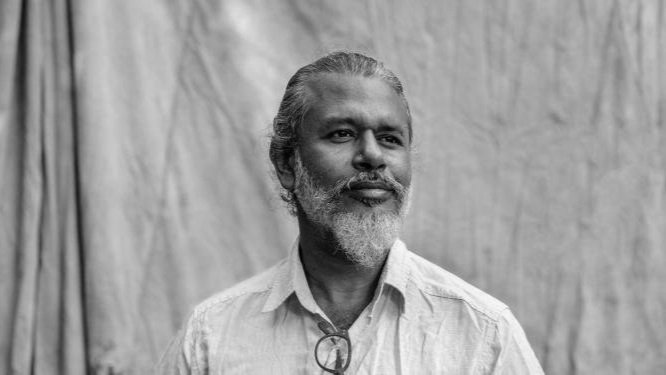The Seven Moons of Maali Almeida (2022)
Why this one?
I’m currently making my way through the 2022 Booker Shortlist.
The Seven Moons of Maali Almeida is by Shehan Karunatilaka (1975- ; active 2000- ), born in Galle, Sri Lanka. He grew up in Colombo and studied in New Zealand. His first manuscript, The Painter (2000), was shortlisted for the Gratiaen Prize (a Sri Lankan literary award established by Booker winner Michael Ondaatje), but was never published.
His debut novel proper Chinaman: The Legend of Pradeep Mathew was self-published in 2010, and used cricket as a device to write about Sri Lankan history. It won numerous awards, including the Commonwealth Book Prize and was named one of the best cricket books of all time by Wisden.
Seven Moons was originally published in India in 2020 as Chats with the Dead. In between his two novels, Karunatilaka published a children’s book, Please Don’t Put That in Your Mouth (2019), illustrated by his brother Lalith.
Thoughts, etc.
The Seven Moons of Maali Almeida is structurally a murder mystery, albeit one with significant twist. In 1989, war photographer Maali Almeida finds himself in a highly bureaucratic version of the afterlife, in a kind of hinterland between life and passage to “The Light” in which he must solve the mystery of his own death in ‘seven moons’ (otherwise known as a week). It’s set against the backdrop of a particularly turbulent period is Sri Lanka’s troubled recent history, in which various factions including the Tamil Tigers, the marxist JVP, and the government’s own death squads are unleashing relatively indiscrimate violence on each other at a shocking rate.
Maali’s ghost-like status allows him to roam around (to a limited extent - in places he has visited or is being talked about) and observe the reactions of those close to him as well as those participating in politics and factional violence in Colombo and across Sri Lanka. Via some moderately confusing mechanism, he’s also able to ‘whisper’ some suggestions to those still living, and thereby help bring about a plot to publish some of his hidden photographs that detail state involvement in massacres, including a notable event in 1983.
As you can probably tell already, there is a LOT going on here. Aside from the central skewed murder mystery, we get multi-layered (and not always easy to follow) political satire, lots of magic realist devices (some more successful than others) and deep personal self-examination of Maali’s own life, work, family and romantic/sexual relationships. Phew.
What I enjoyed, I enjoyed a lot. Maali is a really well-realised, three-dimensional character - reckless, rebellious, yet fiercely dedicated to his craft (whoever he ends up serving with it). He drinks a lot, sleeps around, and is generally one of those annoyingly charming characters who is also kind of a massive dick. Yes, it’s all a bit blokey antihero vibes, but its 80s setting makes it all make sense - he’s a product of his time as much as his place. Oh, and he’s gay and (at least to family) not “out”, which adds an extra layer of fun. His relationship with his boyfriend DD and his ‘official’ girlfriend Jaki, who has a misguided obsession with him before they settle into a close friendship, is really the heart of the book and what kept me interested.
Beyond this, I found it a rather frustrating reading experience. Its concept was intriguing, but didn’t feel fully realised. The version of the afterlife presented felt a bit tedious, if I’m honest. Maybe that was the point. But its tropes all felt a little bit hackneyed: the bureaucratic afterlife has popped up numerous times in books and films, the wise talking animals were predictable, and the thrown in demons and characters that facilitated communication with the real-world felt insubstantial and uninspiring. Its depictions of reality were much more effective, really giving a sense of the chaos and brutality of the period. But I found myself more interested in Maali’s observations of these events and of the aftermath of his own personal relationships than I did in the mystery of who killed him. The revelation of this mystery, and the ending in general, also felt underwhelming.
I found myself stop-starting with this one quite a lot, and found the distancing second-person narration a little hard to stay engaged with. I’d pick it up and get excited by a particular vignette or new thread, but then quickly get disillusioned by a period of confusion, typically instigated by rapid shifts between Maali’s afterlife perspective, the perspectives of the living, and sudden jumps back in time. While the ‘primer’ provided early on to the nature of the various factions was useful, I also still felt I was missing a lot in terms of the historical references and political figures who featured.
It’s an odd one overall - I can see why it’s on the list and why some people might get a lot out of it. It’s rich and multi-layered, and I was left with a real lingering and evocative sense of having inhabited a particular time and place, and its distinctive atmosphere. But overall I didn’t find it the most satisfying reading experience.
Score
7.5
It’s a worthy and impressively constructed novel, but not one I could honestly say I loved in its entirety. I could easily see it sitting in the pantheon of Booker winners, but for my own tastes, there are stronger contenders this year.
Next up
It’s another tiny book! The highly intriguing Treacle Walker by Alan Garner…


